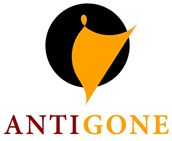
This handbook is written for secondary school teachers (ISCED 2 & 3), and it aims to help you to organise drama- and theatre-based workshops on Gender-Based Violence in your classroom, either physically or with the use of online tools. The lockdown imposed in many countries because of the COVID-19 pandemic in 2020-21 has provenly increased Gender-Based Violence all over Europe, so addressing the problem in classrooms has even more importance in these years.
Our consortium believes that drama- and theatre-based activities has a significant impact on attitudes, emotions and ways of thinking of the students, and can change patterns of pre-conceptions or passive negligence. Based on our experience, pupils really enjoy working with methods based on fiction and stories. With such techniques, you will be able to convey your teaching goals and discuss sensitive issues in a way that pupils won’t even recognize they are learning.
The handbook is divided in 7 chapters.
The first chapter (introduction) introduces you to the Antigone project and explains the structure of this handbook.
The second chapter focuses on what Gender-Based Violence is. The chapter starts with an introduction to the most important theoretical basics and the key concepts, followed by a specific focus on Gender-Based Violence during crises, such as the COVID-19 lockdown was. Besides the lockdowns of 2020-21, this part focuses on other crises such as the refugee crisis was in the past years. The chapter ends with an overview of the current challenges in the Antigone consortium partner countries.
The third chapter attempts to introduce you to the theory and methodology of applied drama. The chapter starts with a short introduction to the theory and the key concepts, followed by an introduction to the basics of the methodology: explaining how you can start conducting dramatic activities in your classroom. Furthermore, you will find tips and resources about facilitation, handling difficult situations and challenges in the classroom and working interactively in an online platform, Zoom.
The fourth chapter is the core of the handbook, since it presents you 45- or 90-minutes-long lesson plans, that a single teacher can implement independently. You will find easier and more advanced plans, as well as some plans specifically planned for Zoom. Each lesson plan builds up of an explorative (usually dramatic) part and an informative and/or discussion part. Lesson plans are presented thematically, so you will be able to choose a plan which fits the specific aspect of Gender-Based Violence you intend to discuss.
The fifth chapter Connecting the lessons and the educational context starts with a segment tailored to local needs in each country: an exploration of where these lessons can be applied within the school institution/ curriculum. The rest of the chapter list different examples of best practices outside formal education setting (so e.g. a forum theatre performance created at an immigrant centre; a theatre performance created by teenagers in an afterschool cultural school; a street theatre project of an NGO etc.).
The sixth chapter is partially adjusted to the specific countries, and it summarizes useful resources regarding the signs of Gender-Based Violence, what you can do as a teacher, as a victim or as someone who identifies Gender-Based Violence, who can help (e.g. helplines, organizations), and where to read more about the topic.
Finally, chapter 7. list the key references used in this handbook.
You can download the handbook here.
